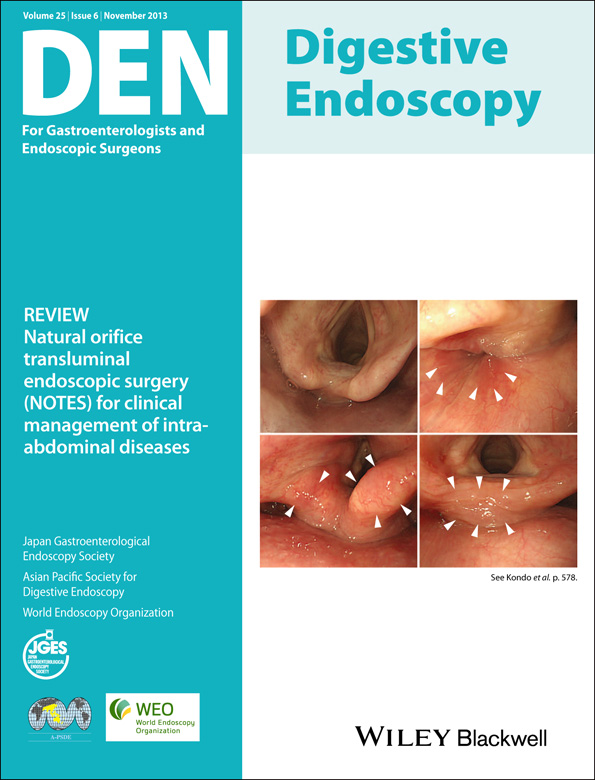Establishment of a simple predictive scoring system for pancreatic fistula after laparoscopy-assisted gastrectomy
Abstract
Background
The potential severity of postoperative pancreatic fistula (POPF) after laparoscopy-assisted gastrectomy (LAG) necessitates efforts to identify predictive factors for POPF. The aim of the present study was to identify predictive factors for POPF and to establish a predictive scoring system for POPF after LAG.
Patients and Methods
Between June 2004 and March 2011, 277 gastric cancer patients who underwent curative resection with LAG were enrolled. POPF was defined according to the International Study Group for Pancreatic Fistula grading system. Risk factors for POPF were evaluated using logistic regression analysis, and a scoring system for POPF was established.
Results
In the derivation cohort, multivariate analysis revealed the risk factors for POPF as patient age ≤70 years (5 points), amylase level of postoperative day 1 drainage fluid >454 IU/L(5 points), total number of retrieved lymph nodes >21 (5 points), body mass index >21.45 kg/m2 (4 points), and operating time >337 min (2 points). In the validation cohort, at the cut-off point for high risk (score ≥15), the model had a negative predictive value of 94.5%, a positive predictive value of 57.4%, a sensitivity of 88.6%, and a specificity of 75.0% (C statistic = 0.857).
Conclusion
This study demonstrated that POPF after LAG is associated with specific preoperative and postoperative factors. With a simple predictive scoring system, patients at high risk for POPF can be accurately identified. This simple predictive scoring system will be useful for many clinicians to assess the risk of POPF after LAG and start treating at-risk patients earlier.




